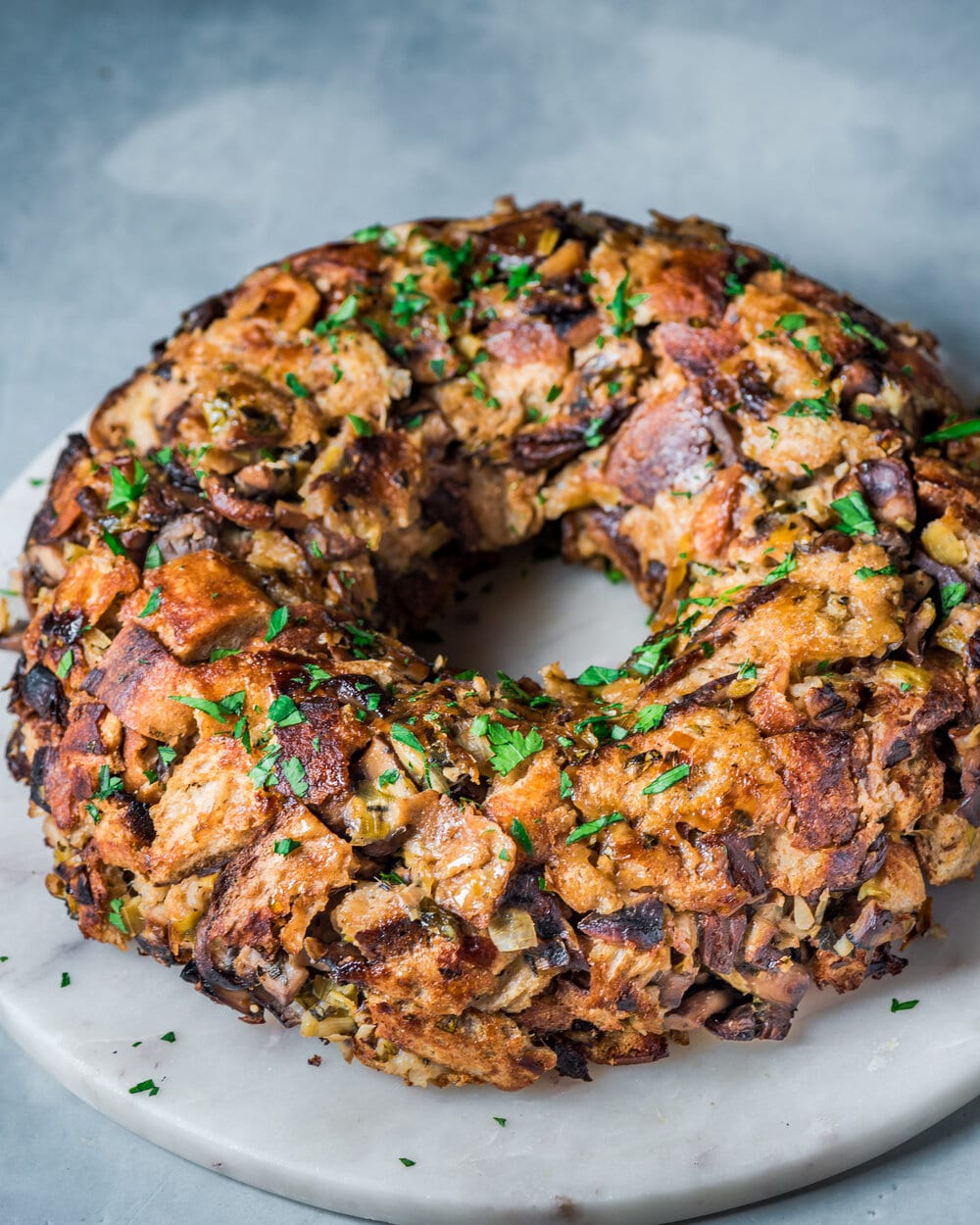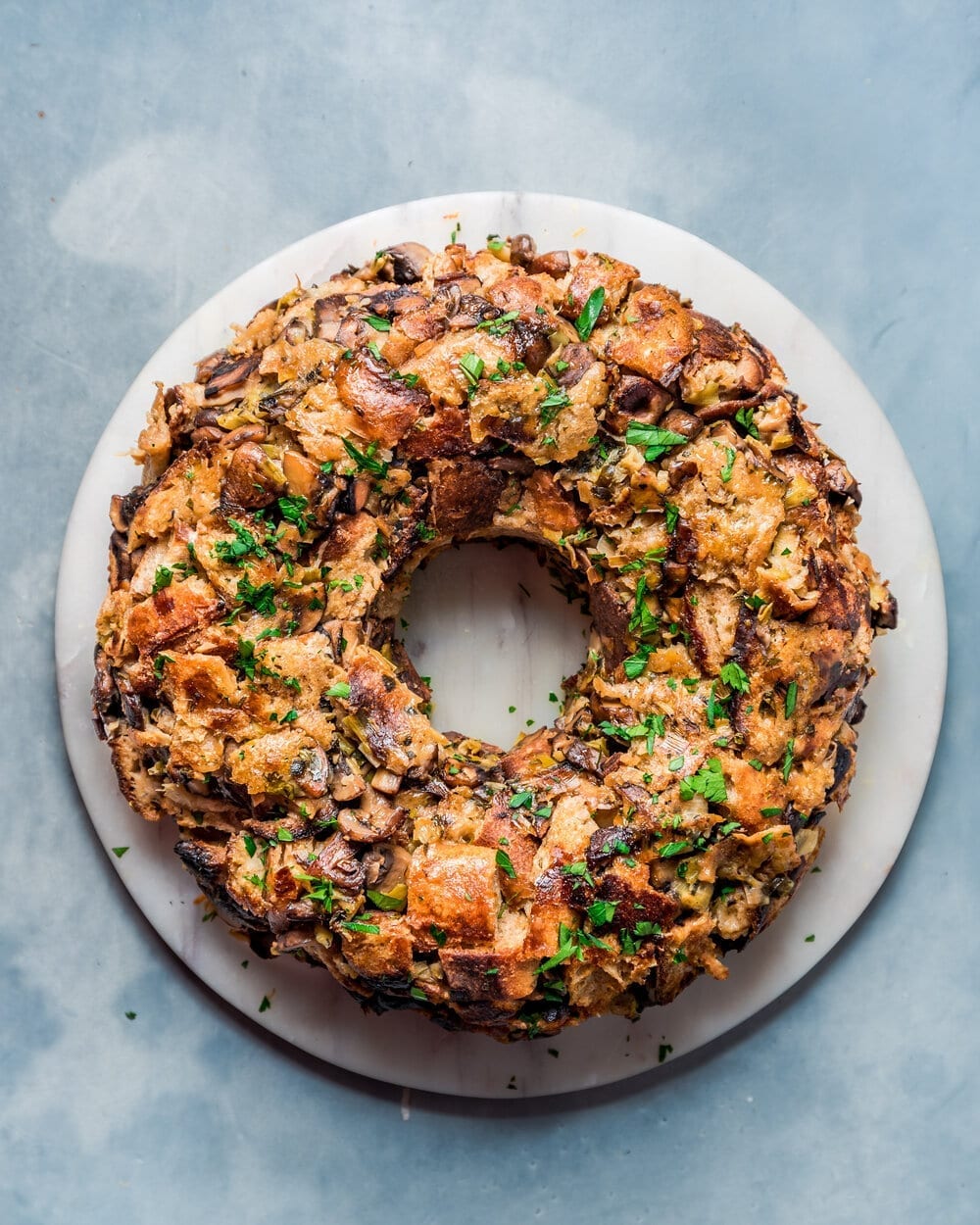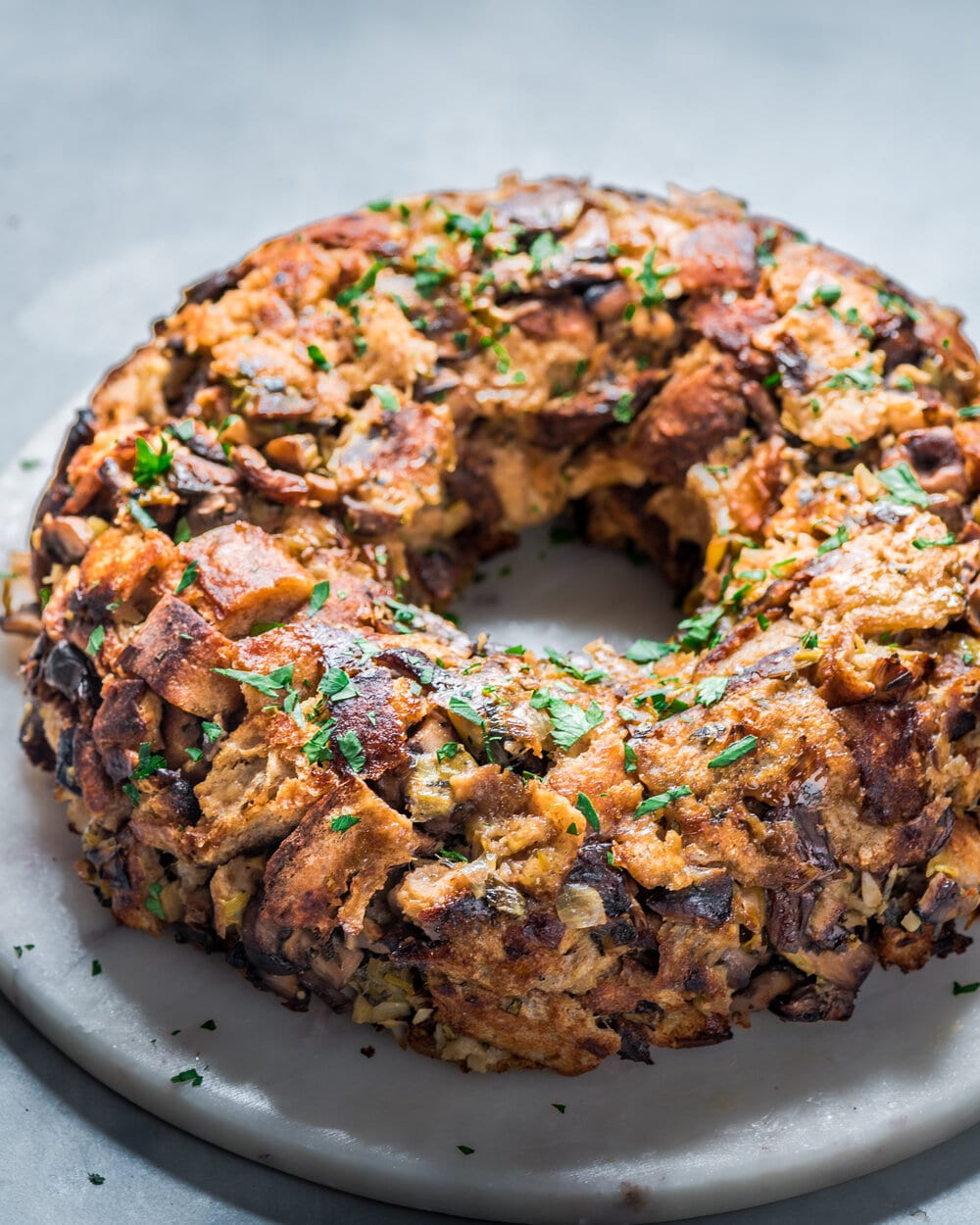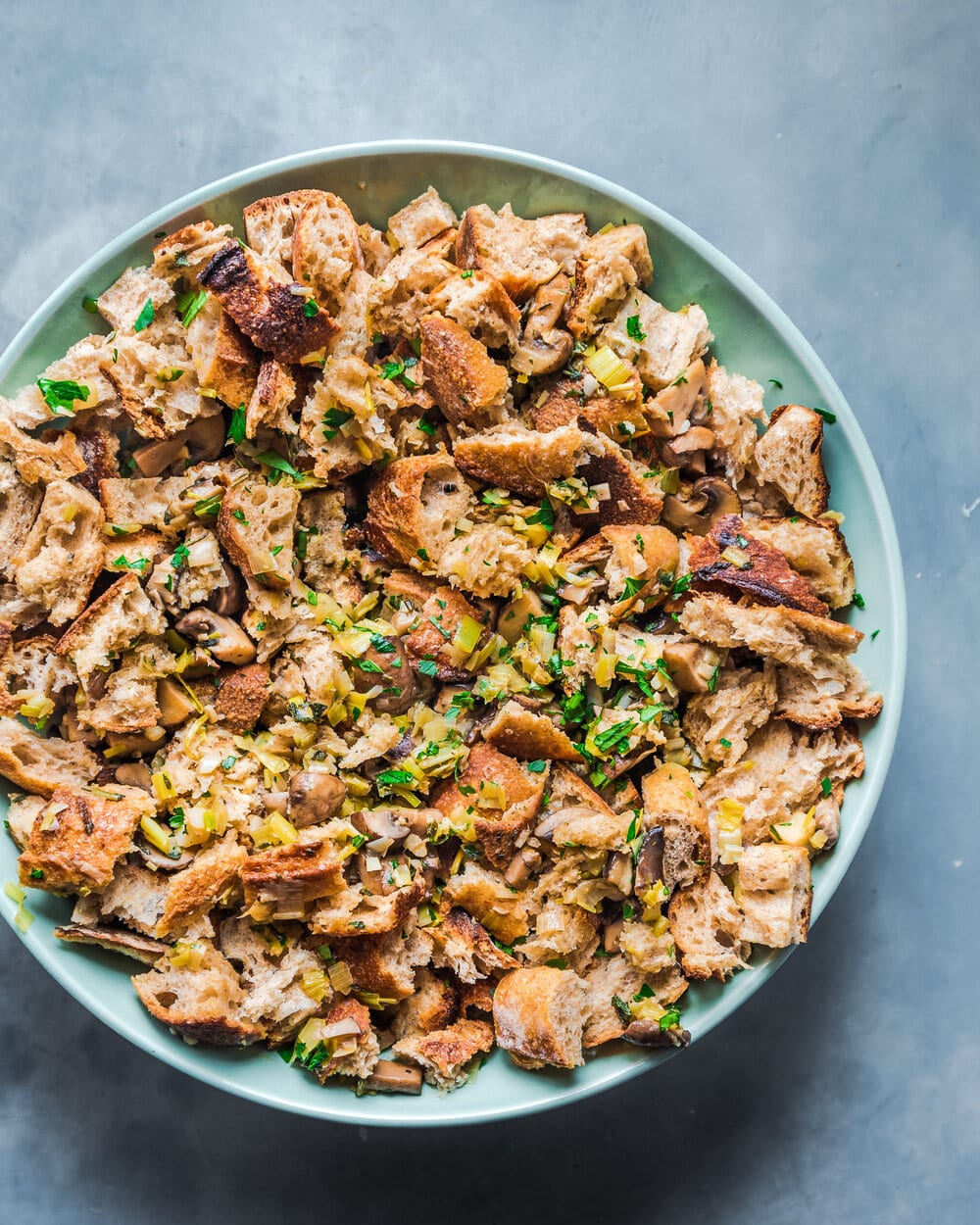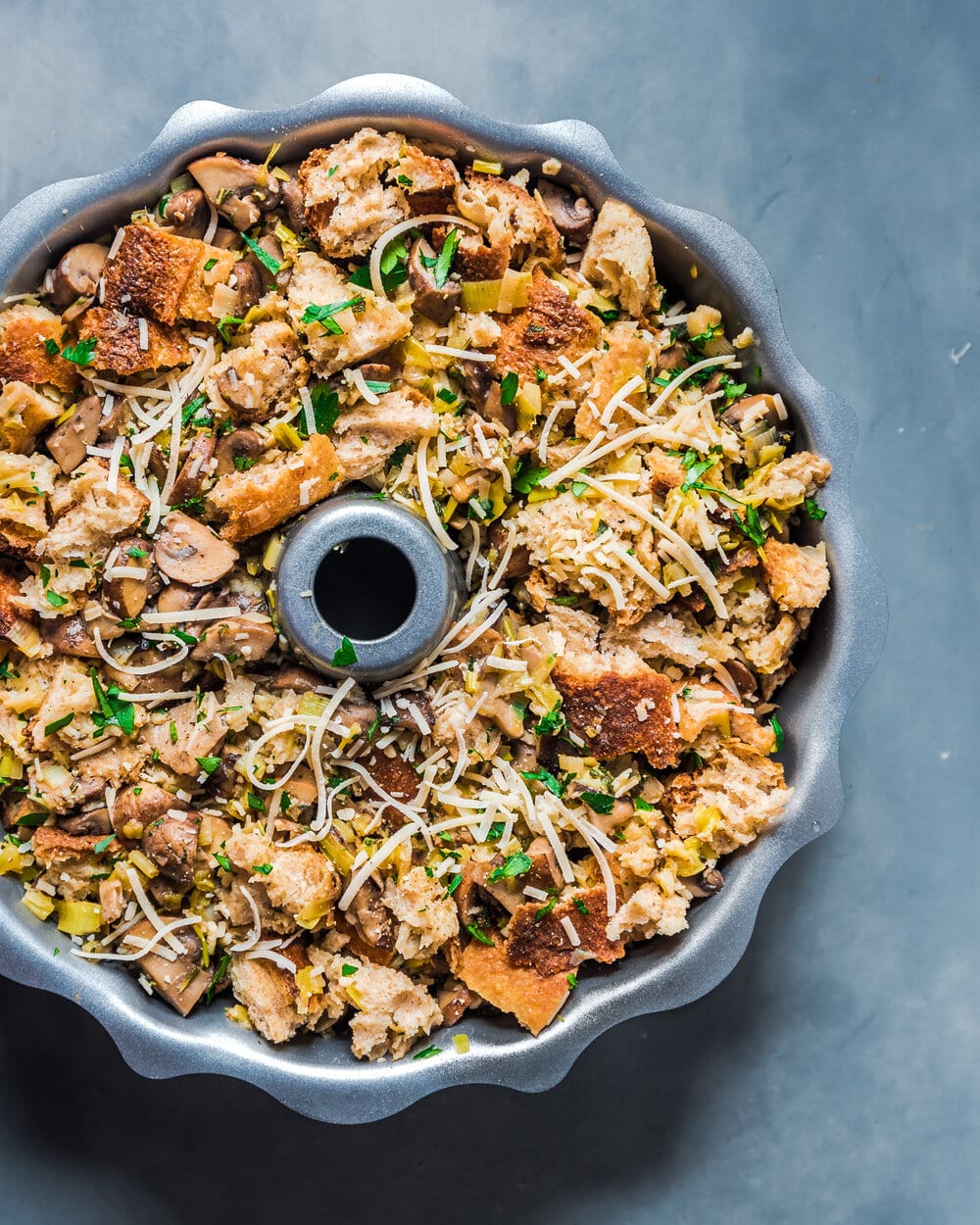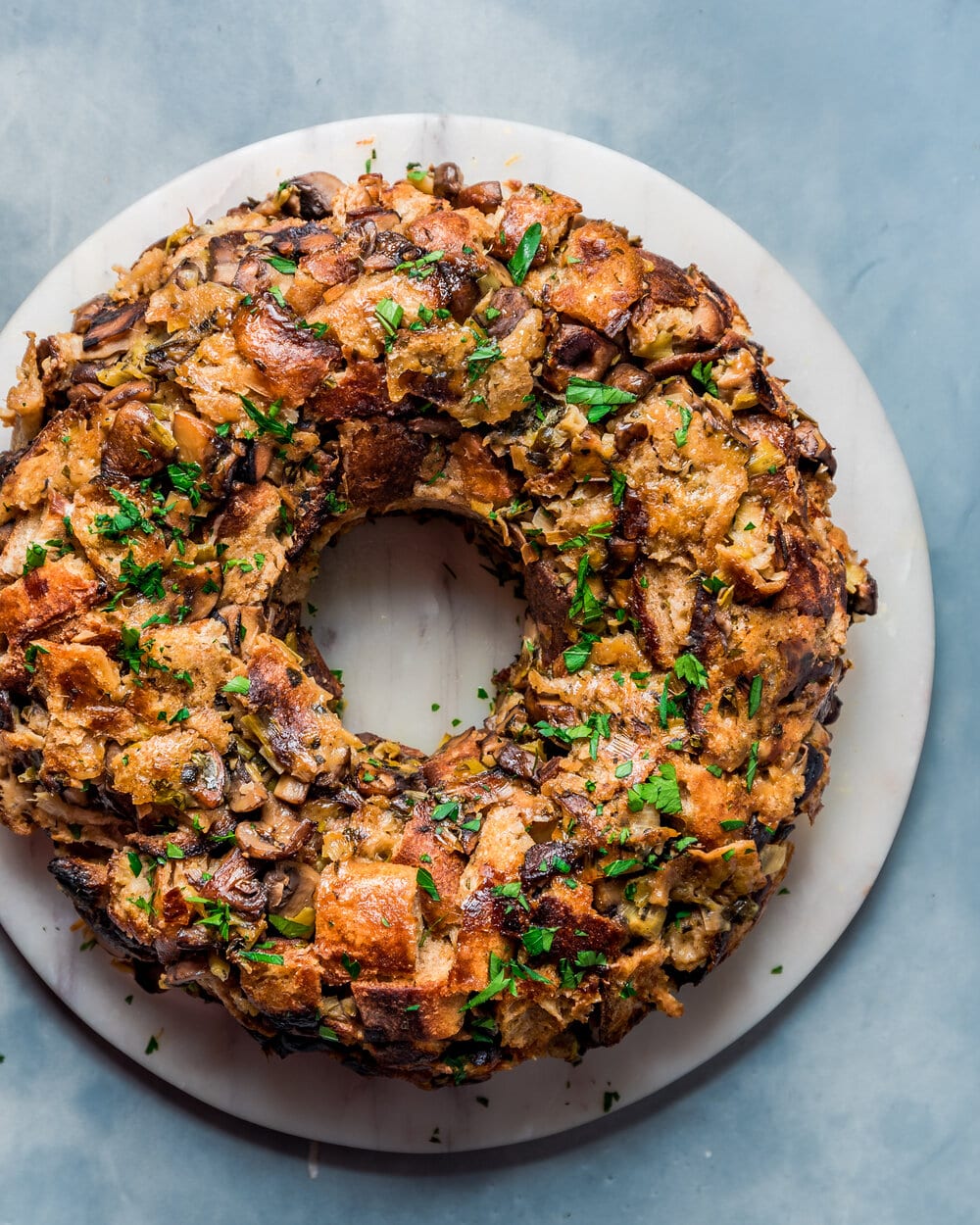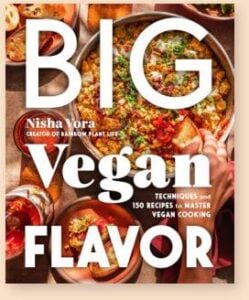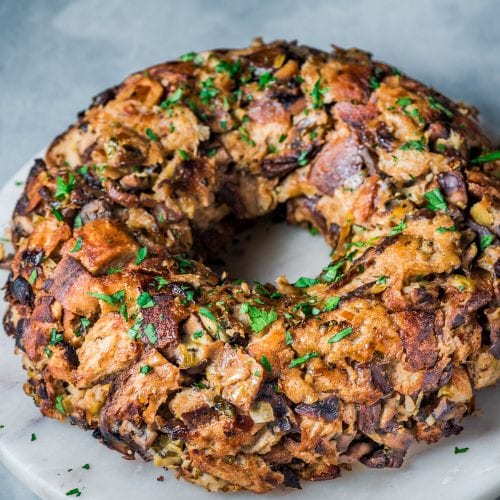As a child, I hated stuffing. I later realized what I hated was Stove Top boxed stuffing mix, which is what we had every year for Thanksgiving until I started taking over the cooking in my household. Even after I started cooking the Thanksgiving dinner, however, I steered clear of making stuffing because (1) I assumed that all stuffing was gross and (2) I thought it would be nice to allow my mother to continue making one dish at Thanksgiving (especially one that was so easy). If you’re wondering why on earth we were eating Stove Top boxed stuffing mix in the first place, I’d like to remind you that this was the ‘90s, when it seemed not only acceptable but also delicious. Plus, my parents are lifelong vegetarians who didn’t even know what Thanksgiving was until they moved to the United States, so expecting them to find a recipe for a homemade vegetarian stuffing that didn’t taste like wet cardboard in the ‘90s before the Internet was flooded with free recipes…yeah, that would’ve been too much to ask. It wasn’t until I actually went vegan that I started making stuffing for Thanksgiving. And that’s when I realized stuffing is delicious AF. It’s basically a savory French toast casserole. Dried bread gets mixed with cooked veggies and butter and moistened up in the oven. Seems like a savory French toast casserole to me. And this year, 2019, was the year I truly fell in love with stuffing. After 32 years, I now finally understand why a lot of people say that stuffing is their favorite part of Thanksgiving. Now that you know my whole back story about stuffing and how I went from hating it to only very recently loving it, let’s talk about this recipe for Vegan Wild Mushroom Stuffing, shall we? First things first, you might have noticed that my stuffing looks like a wreath. You can call it a Stuffing Wreath, if you’d like. This beautiful little thing actually came about by accident. The first time I tested this recipe, I had just finished making the stuffing but forgot to prepare my baking dish in advance. When I opened my cupboard to grab my baking pan, I remembered that it had been taking up too much space in my small NYC kitchen and so I had stashed it our storage closet to save space. Our storage closet isn’t all that far—it requires an elevator ride down to our basement and it would’ve taken me about 4 minutes to retrieve—but I had already prepared the whole recipe and I was ready to start cooking it immediately. Also, I am pretty lazy. So I grabbed the nearest pan that seemed like it could work. A 12-cup Bundt pan. Bundt pans are typically reserved for bundt cakes, but I figured it held nearly the same volume as a 13×9-inch pan, so I decided to give it a try. And it worked out! I do need to inform you that, unfortunately, the stuffing does not hold its wreath shape once you cut into it. The wreath basically folds in on itself. But that’s actually a good thing (aside from presentation purposes) because this is stuffing, after all. You don’t want your stuffing to be firm and dense. You want it to be moist, soft, and tender, with some crisped up pieces that have a crunch. You can of course make this in a standard 13×9-inch or 3 quart baking dish. The reasons you might want to make it into a wreath, like I did, is if (a) you have a Bundt pan lying around that you never use, (b) you’re into fancy presentations ,and/or (c) you think your Thanksgiving guests would enjoy the fancy presentation. Speaking of fancy presentation, this would make a beautiful centerpiece at any holiday table! If you’ve ever made homemade stuffing, you know that is actually very simple to make. And if you’ve never made it before, well I guess that’s a good thing because this recipe is easy to make and pretty foolproof. That said, here are some notes on ingredients and tips for perfecting this Vegan Wild Mushroom Stuffing. Mushrooms: This is a Mushroom Stuffing, so we are using a lot of mushrooms. One-and-a-half pounds, to be precise. This recipe calls for 1 pound wild mushrooms and 1/2 pound ordinary mushrooms, but I understand that wild mushrooms are pricy, so you can use a smaller quantity of wild mushrooms, if you prefer.
If you do use only button mushrooms, just keep in mind that they are are more watery than wild mushrooms (at least in my experience), so it might take a few more minutes for the liquid to evaporate when cooking button mushrooms than when cooking a combination of wild and button mushrooms. Also, as written in the instructions, do not add the salt when you first start cooking the mushrooms. Rather, wait until the last minute of cooking the mushrooms to salt them. This is because mushrooms have a high water content and salting them at the start of cooking encourages them to release their moisture. This leads to watery mushrooms that are less meaty (not good).
Fresh Herbs: This recipe calls for fresh sage, thyme, and rosemary, but I have also made it with thyme and oregano. Both combos are great, but whatever variety you choose, don’t skimp on the amount of herbs used because it infuses the stuffing with a lot of savory, Thanksgiving-y flavors.
I almost always recommend using fresh herbs for these types of woodsy herbs, especially rosemary and sage, because the flavor is much more potent than dried herbs. Plus, if you haven’t freshly stocked your dried herbs, they’ve probably lost some of their potency. If you are worried about having too many fresh herbs and don’t want them to go to waste, here’s a fun and easy way to preserve fresh herbs (I used the remaining sage leaves from this recipe to make olive-oil sage cubes, which are in my freezer right now).
Bread: Ah yes, this is stuffing, so bread is essential, obviously. I like to use a hearty rustic bread, such a a good-quality baguette, French bread, or a ciabatta.
Many stuffing recipes call for cutting your bread into cubes. I do not do this and instead prefer to tear the bread into pieces using my hands. For one, it is less annoying to do. Cutting bread into small cubes is annoying and time consuming. In contrast, tearing it apart with your hands is relatively quick and easy. Plus, it gives the stuffing a more rustic character and makes it feel less like a boxed Stove Top stuffing. Whatever bread you use and however you tear/cut it, be sure to dry out the bread! There are two ways to dry out your bread. For either method, the first step is to tear your bread into into 11/2- to 2-inch pieces. If you are serving your stuffing the following day and you have already purchased your bread, leave the bread pieces on a large rimmed sheet pan at room temperature (uncovered) to dry out until the next day. If you are preparing your stuffing on the same day you’re serving it, you’ll need to dry your bread out in the oven. I’ve seen various temperature and time combinations for drying out bread, but what works for me when using a baguette-style bread is to bake the bread pieces at 300ºF/150ºC for 25 – 40 minutes, until the bread is completely dried out and lightly crisped. The amount of time it takes will depend on the variety of bread you use.
Vegan Butter and Olive Oil: This recipe, like many stuffing recipes, uses a combination of olive oil and (vegan) butter to cook the veggies.
I like the combination since the butter brings a richness to this dish (it’s Thanksgiving, after all) and the addition of oil ensures that the veggies won’t easily burn. If you don’t have vegan butter or don’t want to use it, you can just use more olive oil.
Flaxseed meal: The reason many stuffing recipes call for an egg or two is because eggs act as a binder and help hold the stuffing together. Here, the combination of a flax egg (flaxseed meal mixed with water to thicken), along with vegetable broth, act as the binder. Leeks: I absolutely love the combination of mushrooms and leeks, but if you can’t find leeks, you can easily use onions instead.
Also, leeks are dirty AF. Strip them of the outer leaves and then slice of the dark green parts, which are too fibrous to eat. Then wash them thoroughly in cold water until all traces of dirt are gone.
Dry white wine: I love the flavor that wine imparts to this stuffing. It enhances and accents the flavors and aromas of the mushrooms and leeks. However, if you don’t drink wine or don’t keep it in your house, you can substitute the 1 cup of dry white wine with vegetable broth. If you are worried about cooking with wine for children, don’t be! The alcohol cooks off during cooking so you won’t accidentally get your kids tipsy.
If you are strictly vegan or cooking for someone who is, this is is a good vegan-friendly dry white wine.
Miso paste: This is not a traditional ingredient in stuffing, but as you might have noticed in my recipes, I like to incorporate umami into my savory recipes wherever possible because it just makes them taste so much better! If you don’t cook with soy or are intolerant to it, you can omit it. But I recommend buying chickpea miso (affiliate link) instead. It’s not the exact same, but it does serve the same purpose. That’s all you need to know about making this incredibly delicious Vegan Wild Mushroom Stuffing! First holiday season as a vegan? Check out my holiday survival guide for vegans! And don’t forget to check out my roundup of Vegan Thanksgiving recipes and Vegan Christmas recipes for more delicious inspiration :)
Big Vegan Flavor
Techniques and 150 recipes to master vegan cooking.
